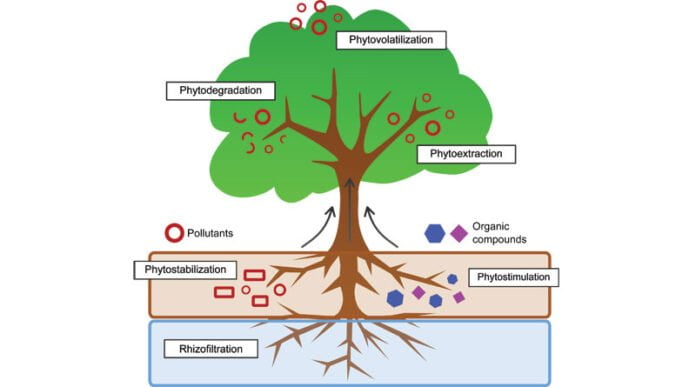Homebuyers who build on lots with contaminated soil may be seeking ways to sustainably improve topsoil, especially as they begin making decisions about their landscaping and outdoor living areas. One potential solution is with phytoremediation.
Summarized as utilizing plants’ unique metabolic and absorption capabilities to remove or stabilize contaminants in the soil, phytoremediation is not a new concept. However, it is a concept that absolutely applies to sustainable residential and commercial landscape design.
I’ve long been a proponent of working with the existing soils and site conditions on a project, rather than despite them. You won’t find long lists of soil amendments in my proposals, but instead well-rounded lists of ornamental and native plants that will thrive in a client’s existing soil, be it heavy clay, saturated loam or dry gravel.
RELATED: Wildlife at Home
The idea of further fine-tuning these plant selections to actually remove heavy metal and chemical contaminants from the soils and water is fascinating to me, especially as more and more of my urban project sites have a sordid history of manufacturing. Case in point, I am currently working in a subdivision constructed on a designated brownfield, with subsoil consisting of industrial soils capped with 12 inches of clean sand fill. The long list of contaminants present in the site soils include diesel fuel, paint solvents, heavy metals, chemicals and herbicides from the nearby golf course, to name a few.
It’s important to consider the liabilities when balancing the cost-effective and environmentally friendly benefits of using plants for phytoremediation; namely, that the landscape management plan for the site must clean up the contaminants instead of just moving them to a new location or creating a new hazard exposure. Plant debris must be disposed of in an appropriate manner, and the use of edible plantings may be discouraged due to accidental ingestion of contaminants found in a client’s existing soil.
Elizabeth Pilon-Smits, a professor in the biology department at Colorado State University, provided some suggestions for plant species that are native to Colorado and also good for phytoremediation.
She suggests poplar hybrids, sunflowers, buffalo grass and other prairie grasses, cattails and mustards. Some Astragalus species are “pretty, drought-tolerant and good for cleanup of selenium,” she told Colorado Builder.
Each plant in a landscape serves a different purpose, from phytostabilization to phytodegradation, and as a whole will help heal the spoiled soils over time.








